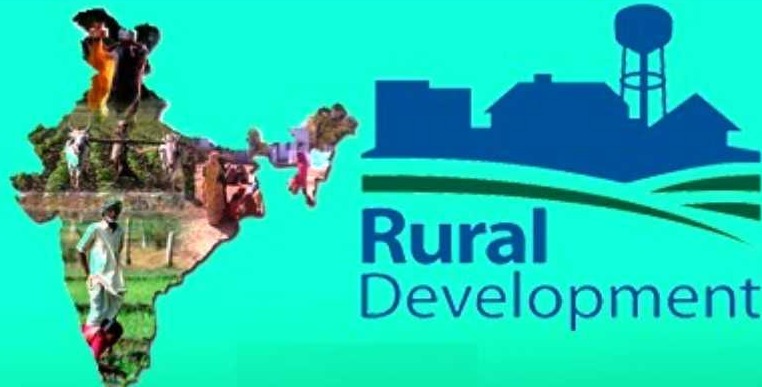Rather than referring to or describing the city, the term rural refers to or describes the countryside. Rural development is the process of enhancing the quality of life and economic well-being of people who live in rural areas, which are generally remote and sparsely populated, by implementing policies and programs. Aspirants of various examinations, as well as general readers, might benefit from the following list of Rural Development Programs in India, which contains extracts from revision capsules for different examinations.
Rather than referring to or describing the city, the term rural refers to or describes the countryside. Rural development is the process of enhancing the quality of life and economic well-being of people who live in rural areas, which are generally remote and sparsely populated, by implementing policies and programs. Aspirants of various examinations, as well as general readers, might benefit from the following list of Rural Development Programs in India, which contains extracts from revision capsules for different examinations.
List of Rural Development Schemes by Government of India

| Rural Development Programme | Year of Beginning | Objective/Description |
| Community Development Programme (CDP) | 1952 | Over-all development of rural areas with people’s participation. |
| Rural Electrification Corporation | 1969 | Electrification in rural areas |
| Accelerated Rural Water Supply Programme(ARWSP) | 1972-73 | For providing drinking water in villages |
| Crash Scheme for Rural Employment | 1972-73 | For rural employment |
| Draught Prone Areas Programme (DPAP) | 1973-74 | To reduce the negative effects of drought on agriculture and livestock output, as well as on the productivity of land, water, and human resources, with the goal of drought proofing the afflicted areas in the long run. |
| Twenty Point Program | 1975 | Poverty eradication and raising the standard of living. |
| National Institution for Rural Development | 1977 | Training, investigation and advisory organization for rural development |
| National Rural Employment Programme (NREP) | 1980 | To provide profitable employment opportunities to the rural poor |
| Development of Women and Children in Rural Areas (DWCRA) | 1982 | To give sufficient chances for self-employment to women from rural households who are living below the poverty line by providing them with appropriate training and resources. |
| Rural Landless Employment Guarantee Programme (RLEGP) | 1983 | For providing employment to landless farmers and labourers |
| National Fund for Rural Development (NFRD) | 1984 | Donors will be eligible for a 100 percent tax deduction, and financial support will be provided for rural development initiatives as well. |
| Council for Advancement of People’s Actions and Rural Technology (CAPART) | 1986 | To provide assistance for rural prosperity. |
| Service Area Account (SAA) | 1988 | A new credit policy for rural areas |
| Jawahar Rozgar Yojana | 1989 | For providing employment to rural unemployed. |
| Agriculture and Rural Debt Relief Scheme (ARDRS) | 1990 | To exempt bank loans up to Rs. 10,000 of rural artisans and weavers. |
| Supply of Improved Toolkits to Rural Artisans | 1992 | To provide modern toolkits to rural craftsmen who are living below the poverty line, with the exception of weavers, tailors, embroiders, and tobacco laborers, who are excluded from the program. |
| District Rural Development Agency (DRDA) | 1993 | To provide financial assistance for rural development. |
| Mahila Samridhi Yojana | 1993 | To encourage the rural women to deposit in Post Office Saving Account. |
| Swarna Jayanti Gram Swarozgar Yojana | 1999 | For eliminating rural poverty and unemployment and promoting self-employment. |
| Indira Awaas Yojana | 1999 | Construction of new dwelling units as well as conversion of unserviceable kutcha huts into pucca/semi-pucca by members of SC/ST communities, freed bonded laborers, and non-SC/ST rural poor living below the poverty line would be aided through the provision of grants in aid to these groups. |
| Pradhan Mantri Gramodaya Yojana | 2000 | To fulfil basic requirements in rural areas. |
| Pradhan Mantri Gram Sadak Yojana (PMGSY) | 2000 | To line all villages with pakka road |
| Annapurna Scheme | 2000 | It is necessary to secure food security for all people and to achieve a hunger-free India within the next five years, as well as to reform and strengthen the Public Distribution System in order to better serve India’s poorest citizens in both rural and urban areas. |
| Sampoorna Gramin Rozgar Yojana | 2001 | In order to increase wage employment in rural areas while also ensuring food security, as well as the development of long-term community, social, and economic infrastructure in rural areas, the following goals must be met: |
| Bharat Nirman Program | 2005 | Agricultural infrastructure development has six components, which are as follows: irrigation; water supply; housing; roads; telephones; and electricity. |
| National Rural Employment Guarantee Scheme (NREGA) | 2006 | To provide at least 100 days wage employment in rural areas. |
| National Livelihood Mission | 2009-10 | The goal of this project is to alleviate poverty among rural BPL people by encouraging a variety of profitable self-employment and wage job possibilities that will result in a meaningful improvement in income over the long term. |
| Pradhanmantri Adarsh Gram Yojana (PMAGY) | 2010 | Integrated development of scheduled castes dominated villages in the country. |
| National Rural Livelihood Mission | 2011 | Scheme is focused on promoting self-employment and organization of rural poor. The basic idea behind this programme is to organize the poor into SHG (Self Help Groups) groups and make them capable for self-employment. |
| National Food Security Scheme (National Food Security Act) | 2013 | Aims to provide subsidized food grains to approximately two thirds of India’s 1.2 billion people. |